Abstract
The survival of genetically engineered Erwinia carotovora L-864, with a kanamycin resistance gene inserted in its chromosome, was monitored in the water and sediment of aquatic microcosms. The density of genetically engineered and wild-type E. carotovora strains declined at the same rate, falling in 32 days below the level of detection by viable counts. We examined the impact of the addition of genetically engineered and wild-type strains on indigenous bacteria belonging to specific functional groups important in nutrient cycling. For up to 16 days, the densities of total and proteolytic bacteria were significantly higher (P < 0.05) in microcosms inoculated with genetically engineered or wild-type E. carotovora, but by 32 days after inoculation, they had decreased to densities similar to those in control microcosms. Inoculation of genetically engineered or wild-type E. carotovora had no apparent effect on the density of amylolytic and pectolytic bacteria in water and sediment. Genetically engineered and wild-type E. carotovora did not have significantly different effects on the densities of specific functional groups of indigenous bacteria (P > 0.05).
Full text
PDF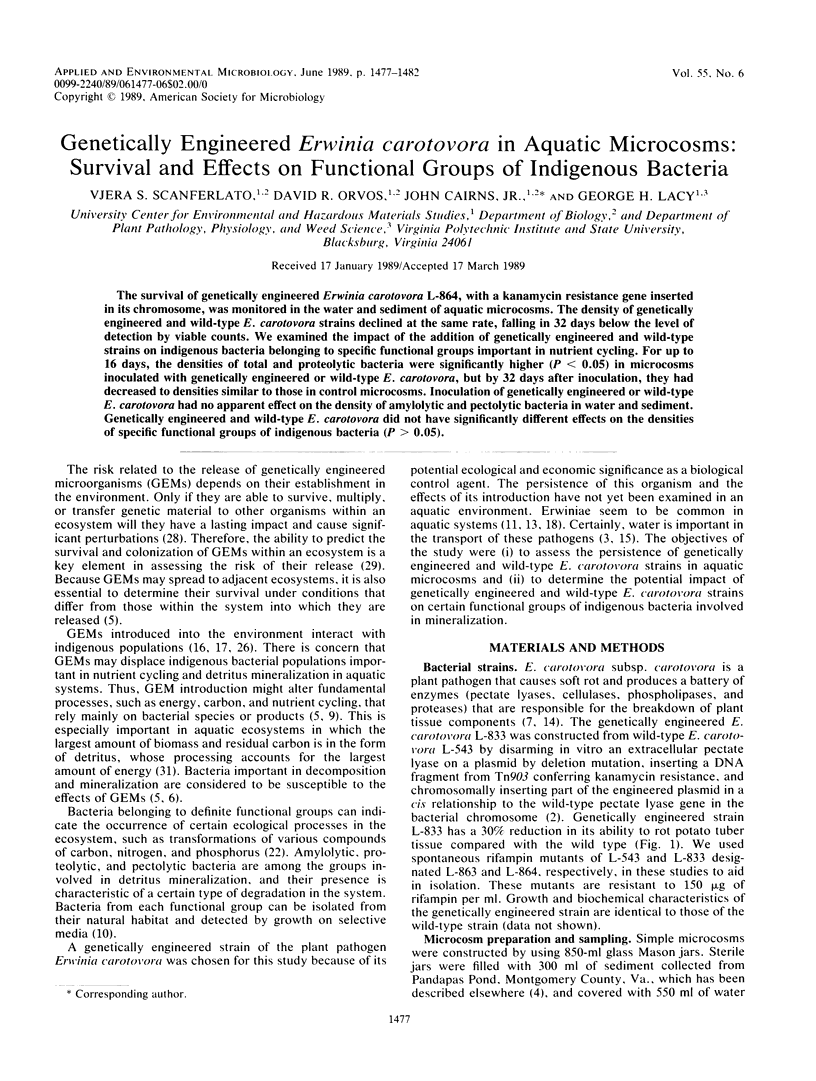
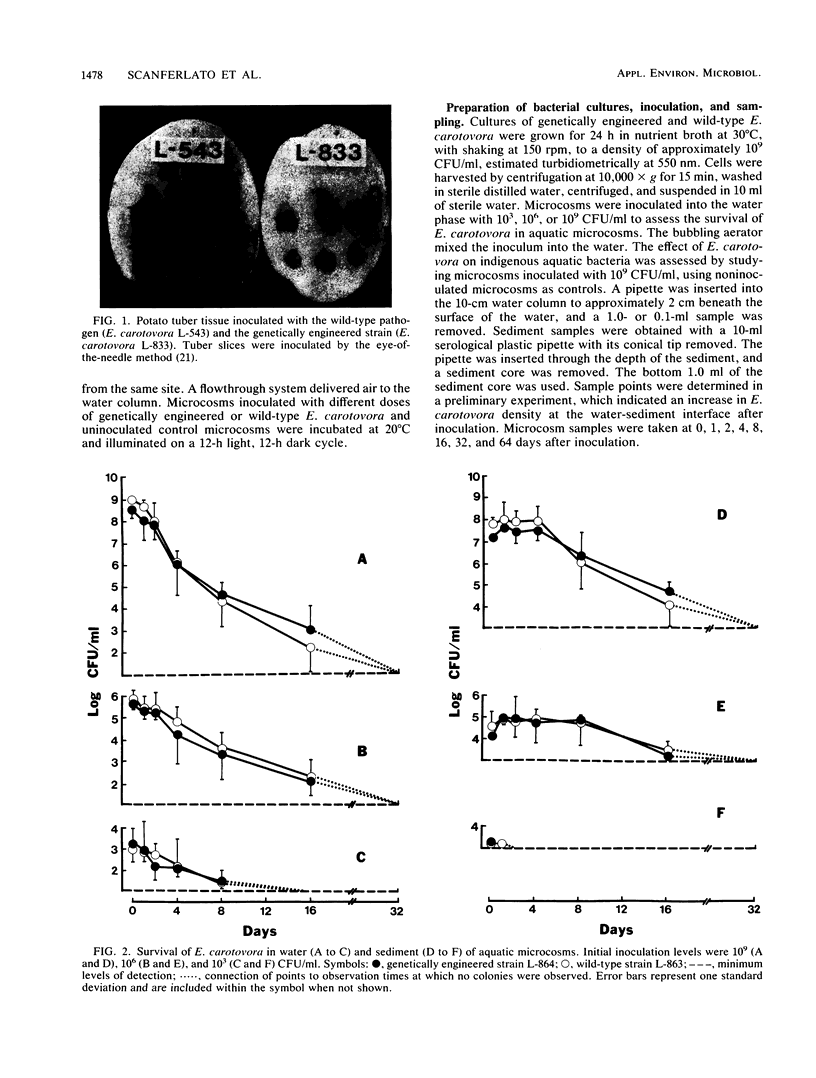
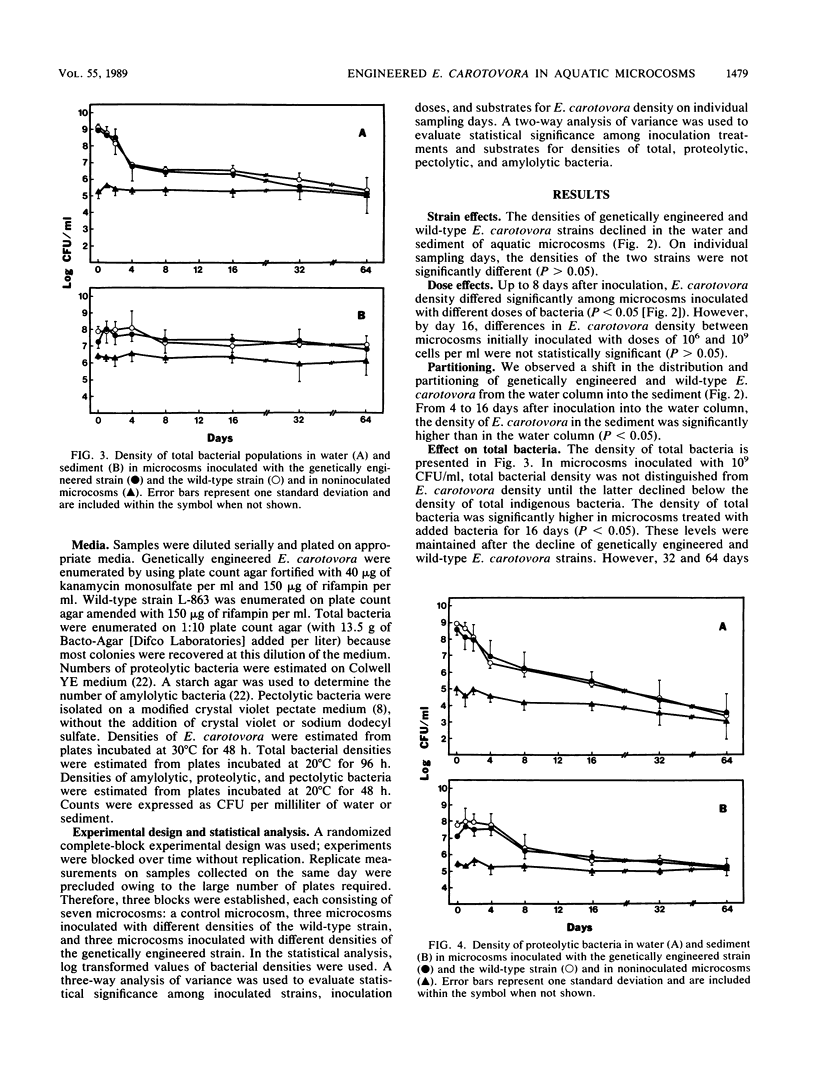
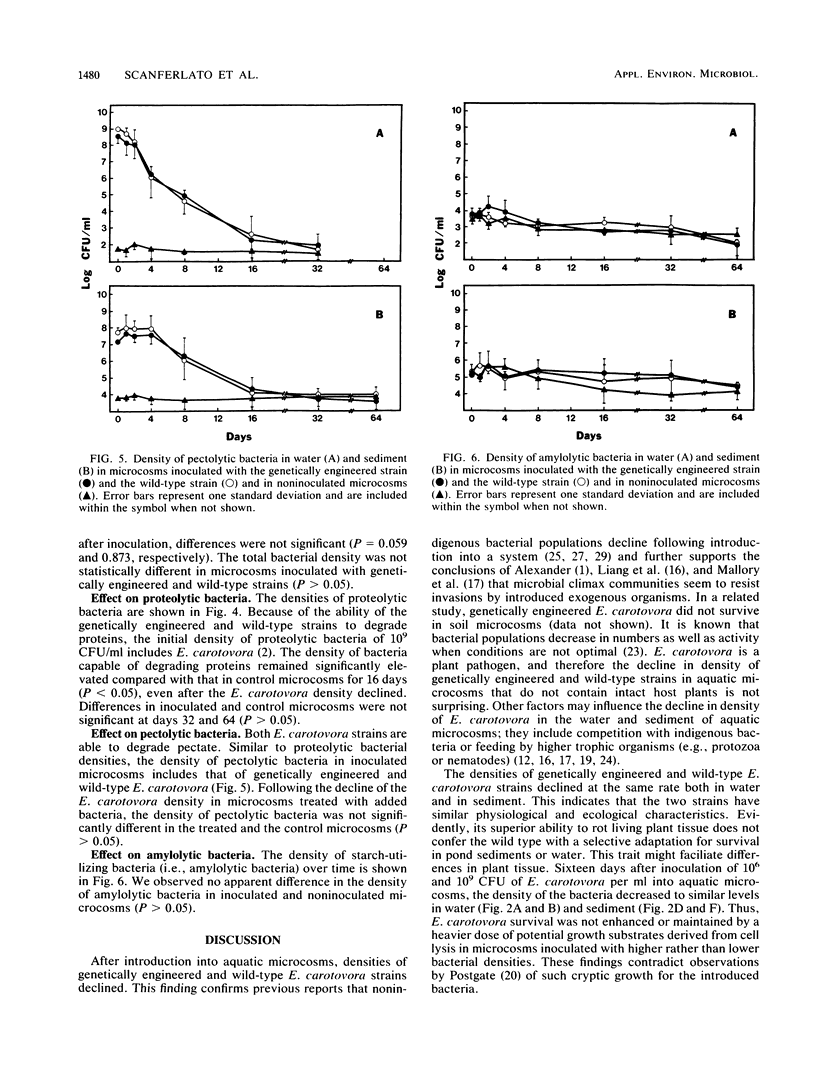
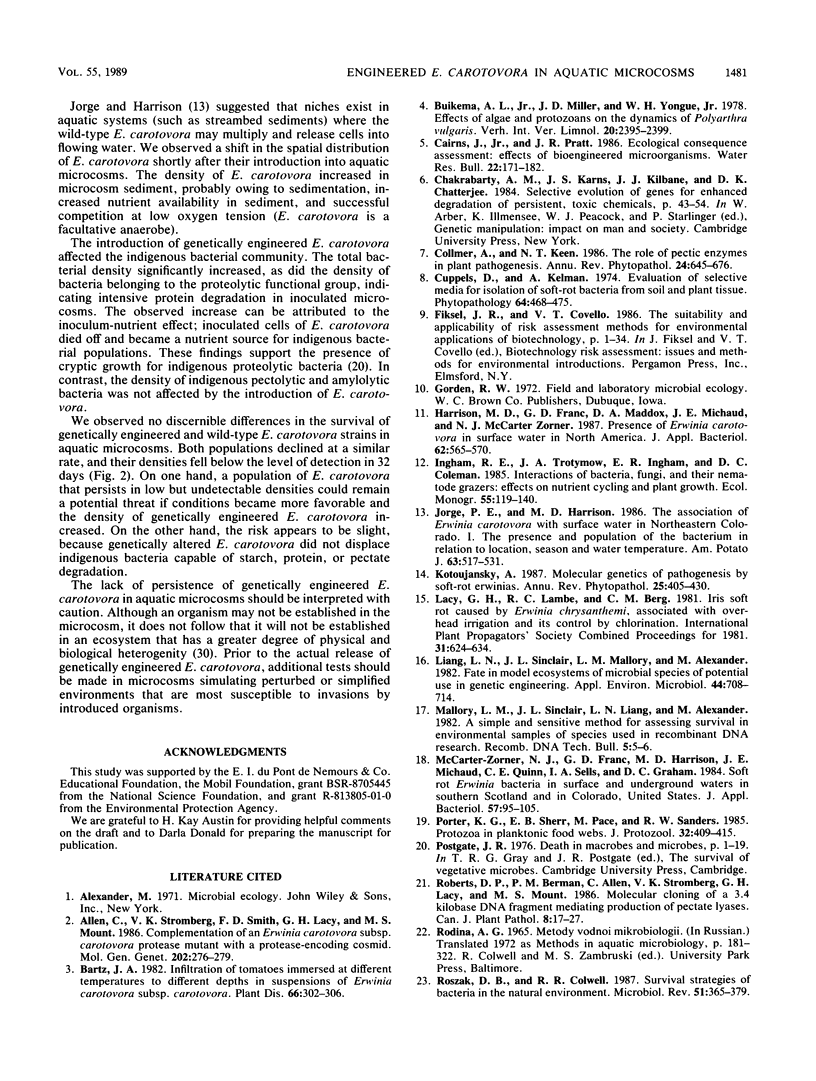
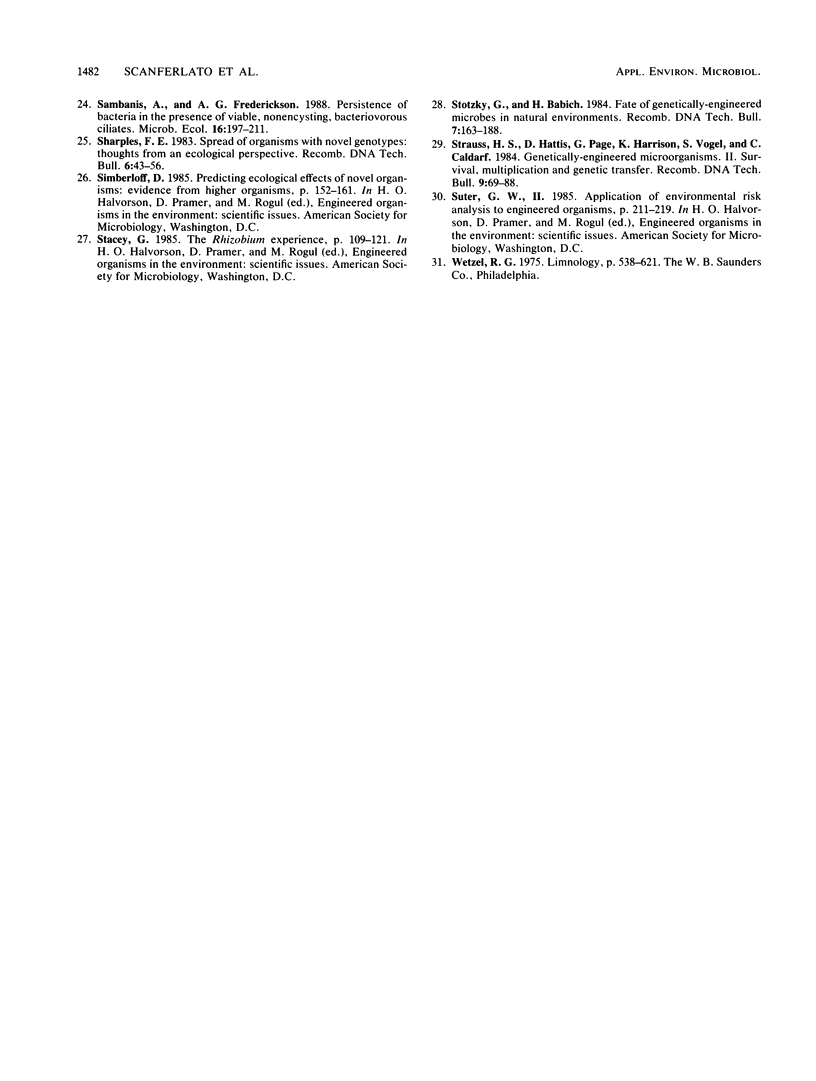
Images in this article
Selected References
These references are in PubMed. This may not be the complete list of references from this article.
- Liang L. N., Sinclair J. L., Mallory L. M., Alexander M. Fate in model ecosystems of microbial species of potential use in genetic engineering. Appl Environ Microbiol. 1982 Sep;44(3):708–714. doi: 10.1128/aem.44.3.708-714.1982. [DOI] [PMC free article] [PubMed] [Google Scholar]
- Mallory L. M., Sinclair J. L., Liang L. N., Alexander M. A simple and sensitive method for assessing survival in environmental samples of species used in recombinant DNA research. Recomb DNA Tech Bull. 1982 Mar;5(1):5–6. [PubMed] [Google Scholar]
- Roszak D. B., Colwell R. R. Survival strategies of bacteria in the natural environment. Microbiol Rev. 1987 Sep;51(3):365–379. doi: 10.1128/mr.51.3.365-379.1987. [DOI] [PMC free article] [PubMed] [Google Scholar]
- Sharples F. E. Spread of organisms with novel genotypes: thoughts from an ecological perspective. Recomb DNA Tech Bull. 1983 Jun;6(2):43–56. [PubMed] [Google Scholar]
- Stotzky G., Babich H. Fate of genetically-engineered microbes in natural environments. Recomb DNA Tech Bull. 1984 Dec;7(4):163–188. [PubMed] [Google Scholar]
- Strauss H. S., Hattis D., Page G., Harrison K., Vogel S., Caldart C. Genetically-engineered microorganisms: II. Survival multiplication and genetic transfer. Recomb DNA Tech Bull. 1986 Jun;9(2):69–88. [PubMed] [Google Scholar]



